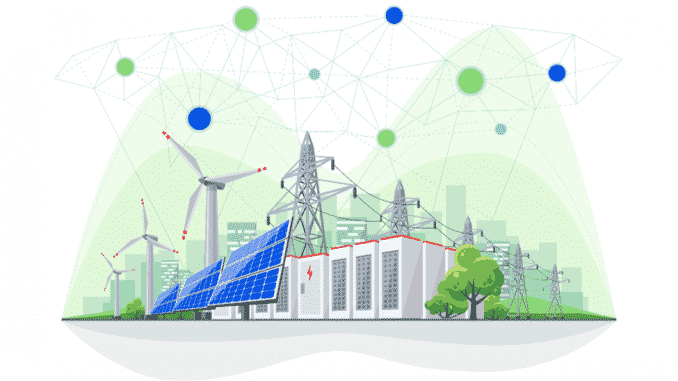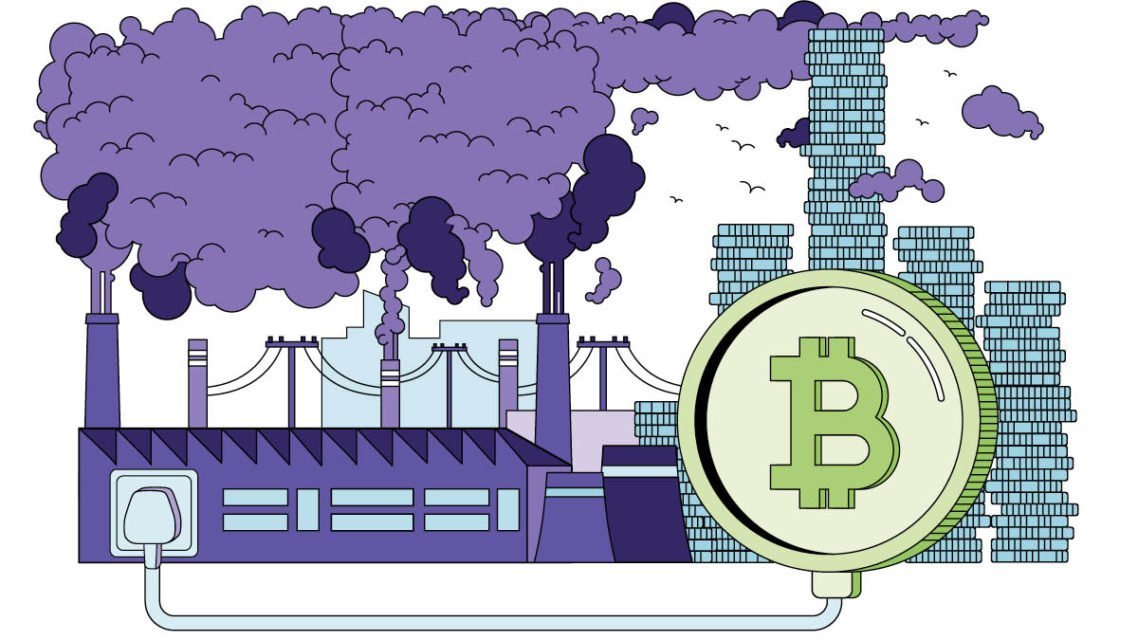Understanding consensus mechanisms such as Proof of Work and Proof of Stake is crucial to understanding the interactions between energy use and cryptocurrency.
Although Bitcoin has become a global name, blockchain consensus mechanisms and energy use are not so well understood. In the case of Bitcoin, network validators known as miners participate in a Proof of Work (PoW) consensus mechanism. In doing so, miners must compete to solve complex mathematical problems that require significant computational power. As countries around the world strive for environmental sustainability, cryptocurrency mining electricity consumption has faced increasing scrutiny. Some PoW blockchain projects, such as Ethereum, are adopting Proof-of-Stake (PoS) models in response to these concerns. Alternatively, many Bitcoin miners are switching to renewable energy sources with the environment in mind.
Blockchain Technology and Consensus
Although the Internet has become an integral part of daily life worldwide, the underlying infrastructure has undergone little change since its inception decades ago. In particular, many experts argue that the heavily centralized client-server architecture of the internet continues to be problematic in terms of security, privacy and equity. Unlike the centralized network structure of the Internet, blockchain technology operates over a decentralized network of nodes, with each node keeping a copy of the same information held on the network. In addition to addressing many of the underlying issues of the internet, the blockchain network framework encourages the development of cryptocurrency networks such as Bitcoin and decentralized applications (dApps), NFTs, and DeFi. Although solutions to these problems exist, blockchain networks face their own unique challenges. One of the most important of these challenges is energy consumption.
While each blockchain offers unique functionality, the entire blockchain network architecture requires what is called a consensus mechanism to operationalize transaction and validation of data across a decentralized infrastructure. While consensus mechanisms take many forms, most are Proof of Work (PoW), Proof of Stake (PoS), or a combination of both. The main difference between these mechanisms is that Proof of Work requires an energy-intensive system of worldwide networked computer hardware nodes, whereas Proof of Stake relies on a much less energy-intensive shared collateral network to provide the function of a network.

As cryptocurrencies become more common, sustainability concerns have increased regarding the PoW consensus mechanism that underpins blockchain networks like Bitcoin and Ethereum 1.0. Before exploring the relationship between Proof-of-Work blockchains and the environment, it is necessary to understand how PoW works, how PoW consensus is related to cryptocurrency mining, and what energy usage PoW systems may require.
Bitcoin Mining Costs and Proof of Work (PoW)
Of all the blockchain networks using PoW, Bitcoin remains the most popular. Emerging in 2009, Bitcoin (BTC) is the leading digital asset market in valuation and name recognition. The Bitcoin blockchain uses the PoW algorithm to confirm all transactions that occur on the network. The individual nodes of the computer hardware that make up the blockchain network are called miners. Each node keeps a copy of the same information and interacts with the network in real time. Each time a transaction occurs, the data obtained becomes part of a “ block ”. Miners must verify before being recorded on the blockchain. On average, it takes 10 minutes to verify a block of transactions on the Bitcoin network. During this time, miners compete with each other to solve a complex math puzzle.
The Bitcoin protocol adjusts the difficulty of the PoW algorithm up or down to ensure this process takes around 10 minutes on average. The difficulty is adjusted every 2016 blocks based on how long the previous 2016 blocks have been mined. As the Bitcoin network grows, the algorithm becomes increasingly difficult to solve as more miners compete. This dynamic requires large amounts of computational or hash power, which also powers more powerful mining rigs. In general, there are two dominant mining rigs, also known as processing units that PoW miners use:
Graphics Processing Unit (GPU): These mining rigs use the processing power of computer graphics cards to mine cryptocurrencies. uses. Although graphics cards are found in every computer, mining rigs integrate high-performance gaming GPUs to maximize computing power.
Application Specific Integrated Circuit (ASIC): These mining hardware is similar to the random access memory (RAM) chips found in computers. However, ASIC miners are built to maintain a specific blockchain rather than working as a general integrated circuit. ASIC miners, although more expensive than GPU miners, are more powerful and optimized specifically for Bitcoin mining.
Regardless of the mining rig used, the computing power required to run PoW mining has become a popular topic of discussion. Such concerns have caused many to question the environmental costs of mining Bitcoin, while Ethereum, the second most valuable cryptocurrency, is currently transitioning to the less energy-intensive Proof-of-Stake model.
Bitcoin and Cryptocurrency Mining: Electricity Use
According to real-time estimates from the University of Cambridge, the annual energy consumption of Bitcoin is 130TWh in March 2021 , which equates to a continuous electrical draw of 15 gigawatts. In terms of countries, Bitcoin’s energy use at that time would be similar to Ukraine or Argentina. In contrast, the PoS Tezos network was using around 60 MWh per year, or a continuous 7 kilowatt draw over the same period. By making such comparisons, it’s clear why environmental concerns surrounding Bitcoin’s mining costs and overall energy use are rising.
If the Bitcoin price continues to increase over time, more hash power will be required as more miners compete for block rewards. However, this process will also help make the Bitcoin network more secure, higher hashrate often equates to higher network security. Alternatively, if the bitcoin price drops over time, fewer miners will compete for block rewards and the network will become less secure.

Regardless of these market fluctuations, many see Bitcoin as a threat to sustainable energy use. For example, one study found that even a few Bitcoin transactions equals driving a thousand kilometers in a gas-powered sedan. Many PoW miners are switching to renewable energy crypto mining in response to these concerns. However, some argue that this will slow the transition to green energy in other industries, as Bitcoin mining consumes excessive capacity.
Bitcoin Mining and PoW Innovations
While Bitcoin mining is obscure to many, it only represents the PoW consensus mechanism. This mechanism uses cryptographic hash algorithms to reach a consensus in decentralized networks. In the absence of centralized oversight, miners take the responsibility of verifying all network transactions. In return, they receive block rewards in the form of BTC. While this process is under investigation in terms of energy consumption, various innovations are planned to reduce consumption.
For example, renewable energy crypto mining has become an industry-wide focus, especially when oversupply is being discussed. While estimates of the composition of energy used in bitcoin mining are difficult to accurately measure, 73% of bitcoin’s energy consumption has been reported to be carbon neutral. This is due to the reliance on hydropower in mining centers including Southwest China and Scandinavia.
Also, to conceptualize these ideas, we can think of cryptocurrency mining as the process of converting electricity into a financial asset in the form of block rewards. However, because non-renewable energy is cheaper than renewable energy, miners are encouraged to obsolescence to maximize their profits. To change this dynamic, excess renewable energy use can be diverted to cryptocurrency mining rather than being sold back to the grid or stored when these options are not cost-effective. In other words, this model could provide a way to mine PoW cryptocurrencies with clean energy, reduce emissions and turn excess renewable supply into a valuable asset. Although in its infancy, this concept could help Bitcoin overcome the ecological headwinds it faces as the world continues to embrace renewable energy and other sustainable technologies.
While Bitcoin is the best known cryptocurrency, it is also the oldest and is based on the most basic architecture available in the wider crypto space. Newer blockchain networks increasingly rely on Proof-of-Stake-based consensus mechanisms that completely avoid the hardware mining process to reach consensus driven by a stake-based collateral system. Proof-of-Stake networks require up to 95% less energy than PoW networks, and as PoS-dependent networks become more and more common, it’s entirely possible that the controversy surrounding cryptocurrency mining electricity usage is a thing of the past.





